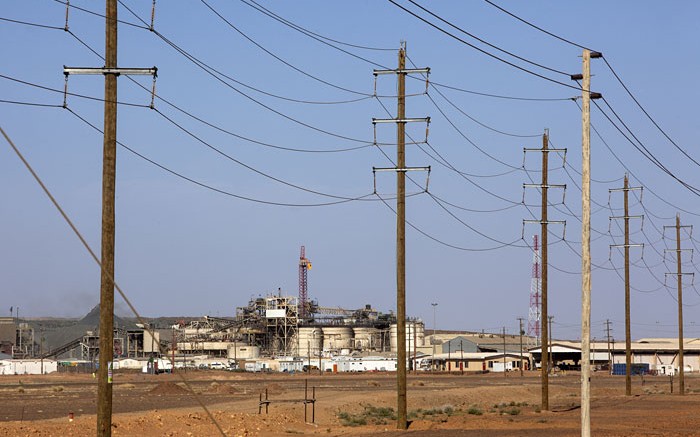Kinross Gold (TSX: K; NYSE: KGC) is working on a two-phase, alternative expansion plan at its Tasiast gold mine in Mauritania to turn the asset into a profitable operation.
This February the producer deferred a US$1.6-billion expansion to bring Tasiast up to 38,000 tonnes per day, citing low gold prices and the need to preserve its balance sheet.
“Rather than wait for the gold price to improve, and knowing we needed to get operating costs down as quickly as possible, we began pursuing alternative concepts,” CEO Paul Rollinson said on a Nov. 10 conference call.
Historically, Kinross was mining banded-iron formations out of small pits at Tasiast to feed its 8,000-tonne-per-day mill. As it transitioned into higher-grade, harder greenschist mineralization, it ran into problems, Rollinson conceded, adding “we struggled on the economics to make money.”
To revamp the operation, Kinross has proposed an expansion concept that doesn’t require buying a mill as previously planned.
The first phase contemplates installing an oversized, semi-autogenous grinding (SAG) mill and gyrator crusher to increase Tasiast’s ore-processing capacity to 12,000 tonnes per day, from 8,000 currently. The second phase could boost Tasiast’s milling, leaching, thickening and refining capacity to bring throughput up to 38,000 tonnes per day.
“The team has come up with … a really good second-best prize to a brand-new mill. We’re excited about it, and obviously the first phase is about beating up that rock with the SAG mill before it goes into the eight, to get eight up to the 12,” Rollinson said.
With an estimated initial capital of US$290 million, the first phase should help process the harder ore, enhancing the mine’s current production and operating costs to become profitable, even at US$1,086 per oz. at press time.
After commissioning phase one, production during the first two years should average 365,000 oz. a year, up from 260,000 oz. in 2014. Estimated cash costs are expected to be US$575 per oz., with all-in costs of US$725 per oz.
The estimates are based on early engineering work on phase one, with a feasibility study (FS) expected in the first quarter of 2016.
“This to me is a great win in what has unfortunately been a steadily declining gold price environment over the last three years,” Rollinson said. “When we finished the FS [for the previously envisioned expansion], gold was US$1,350, and every time we tried get out of the gate, we dealt with a lower gold price.”
If the company goes ahead with phase one, it can wait for a higher gold price to continue with phase two.
“We haven’t bet the farm with a $1.6-billion capital, all-in, ‘go’ decision,” he said. “We’ve got a stop, look and listen opportunity after phase one.”
To mitigate the losses at Tasiast, Kinross laid off 222 workers at the site in September.
As part of reining in costs, Kinross is cutting its corporate headcount costs by 23%, and closing its Denver office. The headcount reductions and Tasiast departures could save the company US$30 million a year.
The miner recently reported a third-quarter net loss of US$52.7 million, or US5¢ per share, compared to breaking even in the same period last year, as margins fell due to lower gold prices. Adjusted net loss came in at US2¢ per share — a cent above the average analyst estimate, on the back of strong operational results.
Kinross produced 687,077 equivalent oz. gold, and sold 721,927 oz. for US$809.4 million in revenue. The average realized gold price dropped US$146 to US$1,122 per oz.
Strong performances at the Fort Knox, Paracatu and Kupol mines — combined with lower oil prices and favourable foreign exchange rates — helped drive down cost of sales to a 2.5-year low of US$668 per equivalent oz. gold, Rollinson said.
All-in sustaining costs, however, were up 2% to US$941 per equivalent oz. gold sold.
Kinross is on track to meet its 2015 equivalent gold production and cost guidance of 2.5 million to 2.6 million oz., at all-in sustaining costs of US$975 to US$1,025.
It ended the quarter with a cash balance of more than US$1 billion and a US$950-million net debt position, which is down US$80 million year-to-date.
Rollinson said Kinross has “been deliberate in our efforts in maintaining a strong balance sheet.”


I am applying to work in ur company as excavator operator tanks very much air from u soon